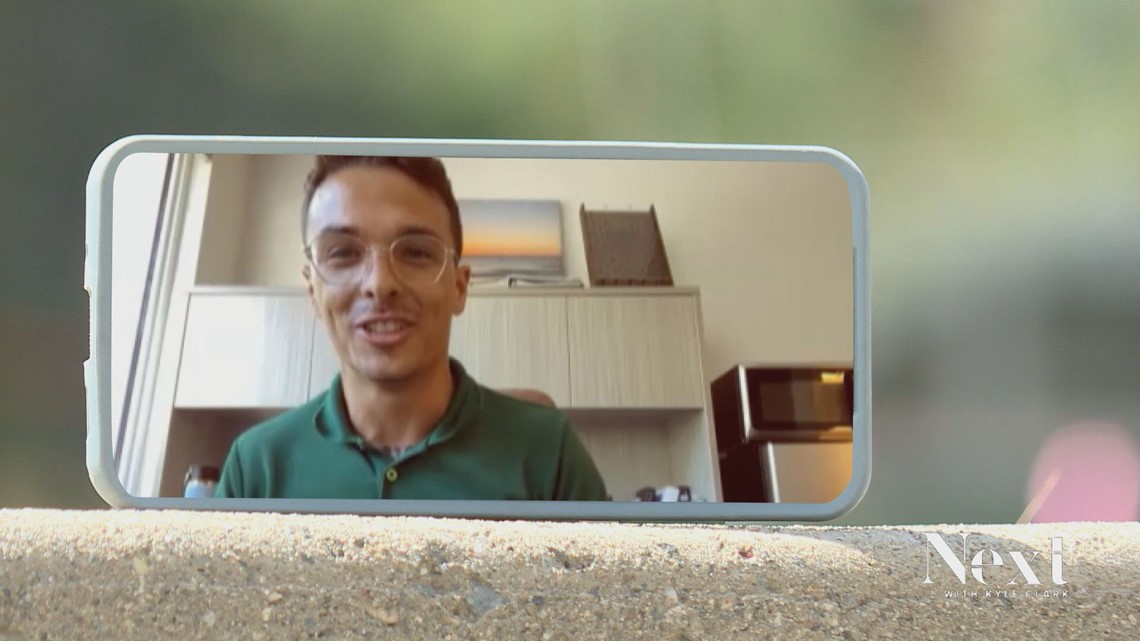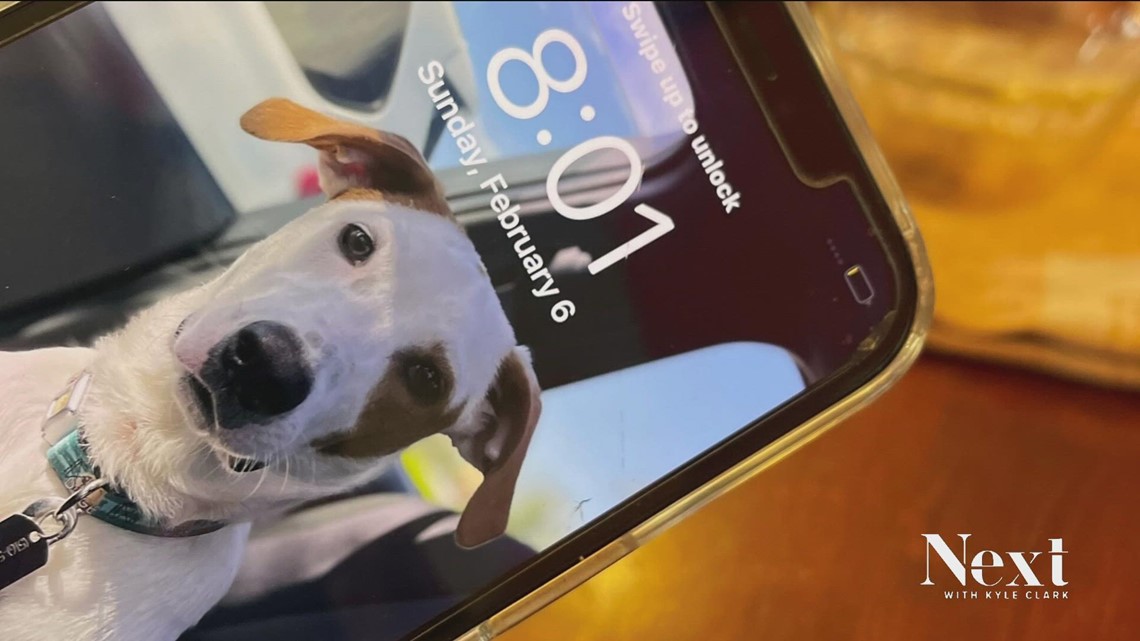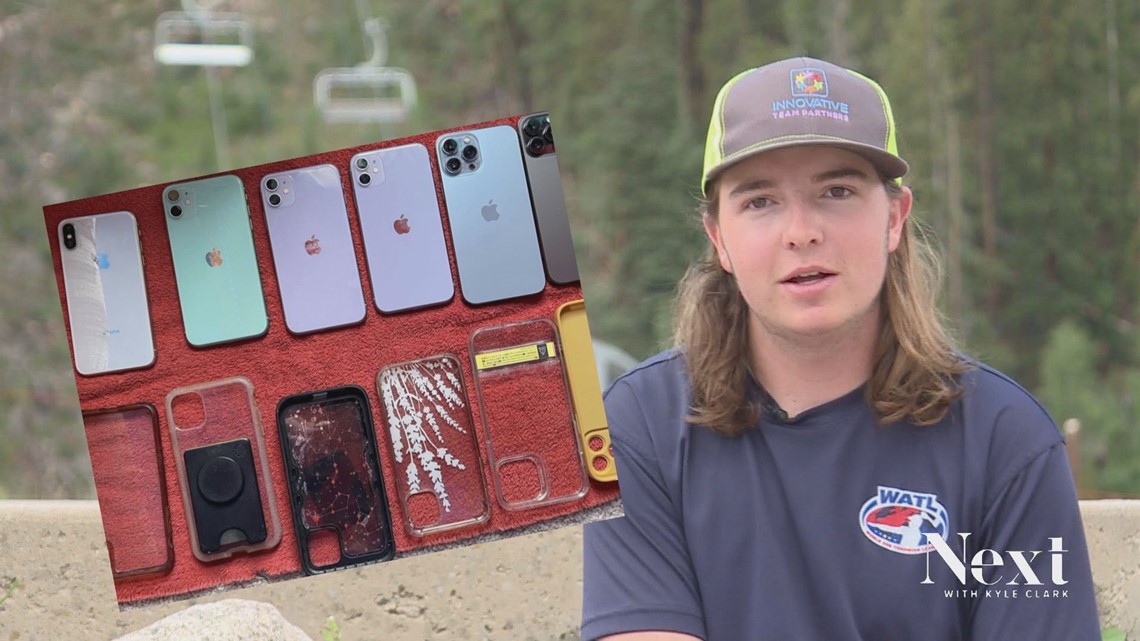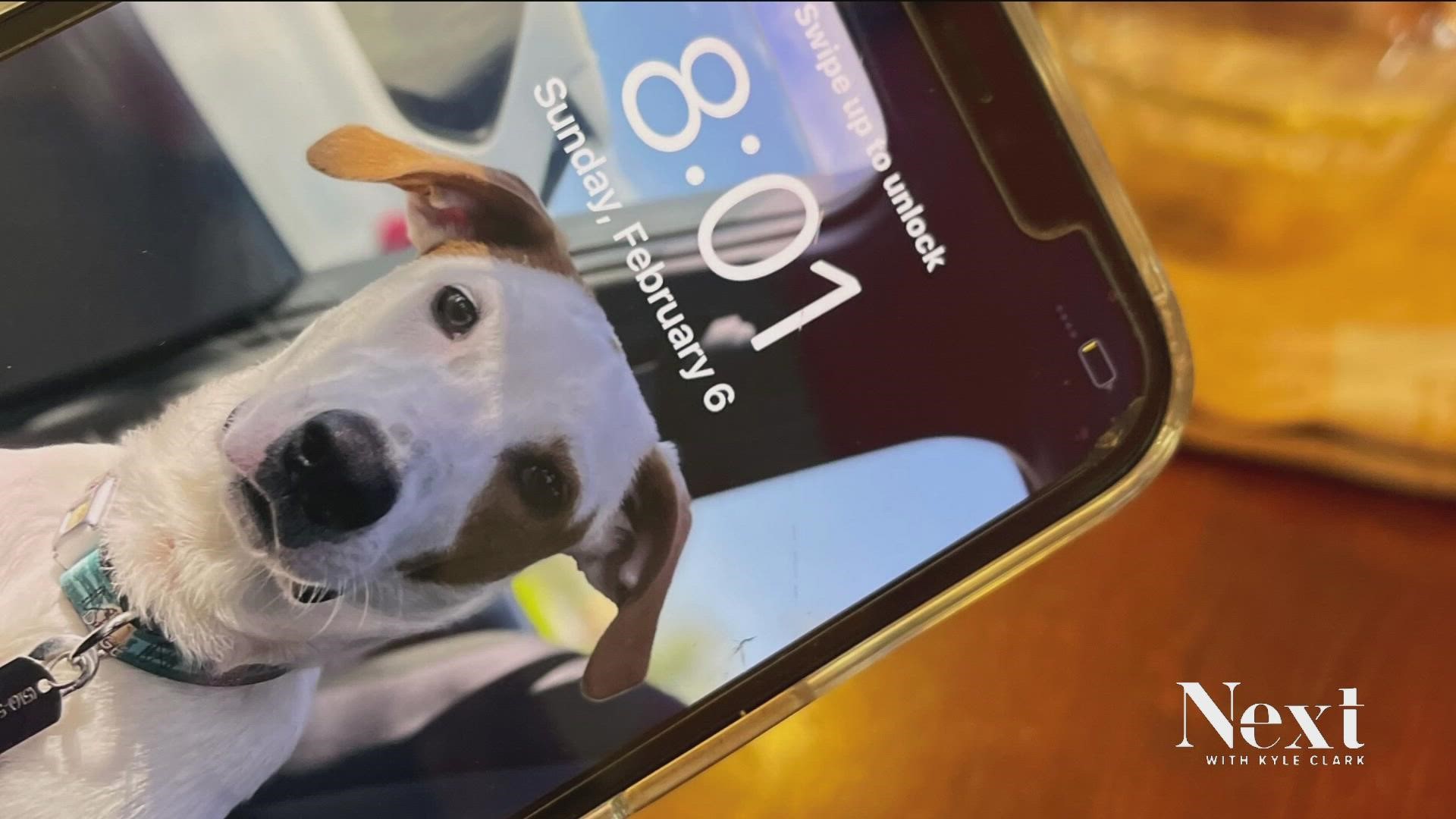DENVER — You could search for miles looking for a lost item on a mountain.
Or you could have Miles search for you.
Dropping something valuable from a ski lift into feet deep snow likely means your item is lost and will not be found.
Challenge accepted.
"During the summer, I go underneath the chair lifts, and I go looking for lost items like cell phones, headphones, ski passes, all sorts of random things," said 16-year-old Miles Vaille.
Vaille, pronounced like "Vail," finds lost items on Keystone Mountain and tries to reunite them with their owners.
"So far I've found 11 phones and I've been able to return nine of them," said Vaille.
One of them belongs to Andrew Noll.
"I go to Colorado once a year. I've been going once a year since I was like four years old for a family ski trip," said Noll, a skier.
Noll, who lives in Boca Raton, Fla., lost his iPhone this past winter.


"I remember the feeling that something had left my pockets," said Noll. "I was like, 'Something might have just fallen out.' I gave myself a nice little pat and then spaced for another minute or two. And then I was like, 'Oh! Cell phone, cell phone, cell phone.'"
"Hopefully, they have marked their phone as lost and put their phone number on their home screen," said Vaille. "When a phone is lost, it'll show someone's phone number and then they'll say, 'Please call' or 'Please text.'"
When Vaille powered up the phone belonging to Noll, there was not a "lost phone" screen, but rather a typical background photo.
"I found someone's phone, it had a picture of a dog on it and the collar actually had the person's phone number on it," said Vaille. "I was able to take the phone number off the collar and contact him via the number on the collar, which I think's pretty cool."
"When I realized that that's what he did, I knew this was a special type of person," said Noll.


It was not a simple transaction.
Vaille wanted proof that he was talking to the rightful owner of the phone.
"He asked me what my background was. And honestly, I didn't recall if it was a picture of me and my significant other or it was a picture of Alan, which was the dog," said Noll.
Through Vaille's detective work, he got Noll his phone back.
"There was not a picture of me. There was no name. There was no anything. There was a passcode, it was protected," said Vaille. "It requires a level of tenacity to solve a problem like that. It requires a level of creativity of thinking outside of the box."
All Vaille ever asks for in return is the cost of shipping.
"I've gotten $100 for one phone," said Vaille. "I've had people pay me, like, $3 for their phone. It's like, I found your really expensive phone and that's all you're going to give me? And it's like, well, at least they gave me something."
"There was no like incentive involved. It was, like, pure altruism. Like the act of going the extra mile without the expectation of getting anything returned. And I know that that requires -- that that's a different type of person," said Noll.
Getting his phone back turned out to benefit Noll more than just the memories and contacts saved on the device.


"I spent $200 because I had insurance on my phone and my deductible was $200. When I recovered the phone, I was able to trade the phone in and I got about $400 on a Visa gift card from where I traded the phone in. He, actually, basically gave me $200. His hard work awarded me $200, so I split that in half with him," said Noll. "I sent him a gift to his house. A gift card for one of ski places at the base of the mountain."
After hearing the story of someone paying Vaille $3, Noll thought twice about his gift.
"It feels selfish of me, I should have given him the whole damn $200," said Noll.
While Vaille hikes for miles to find lost items at Keystone, he still only asks for shipping.
"I just do it because it's fun to clean up the community and help return people's lost items," said Vaille.
Pro tip from Vaille: If you're skiing or snowboard with a GoPro, take a photo of your phone number and/or address, so if it's lost, whoever finds it can look through the SD card and figure out to whom it belonged.
Keystone does search for lost items and has its own lost and found list.
In fact, Noll said that when he skied back down and reported his cell phone missing, the operator stopped the ski lift.
"They had a guy hike probably 200 feet up under the ski lift and dig in the snow," said Noll. "I felt confident that I knew a general area of where the phone was at. But they couldn't recover it, so I called it a loss."
According to a Keystone spokeswoman, mountain staff also does investigative work to try to reunite lost items with their owners.
"If a phone is found, first we will check the database to see if anyone has reported a missing phone. For example, our trail maintenance crew collects items while preparing trails for summer operations. This summer, the crew was able to reunite someone with a phone they found this summer that had been lost in December by using the Lost & Found database," said Vail Resorts spokeswoman Shayna Silverman. "If the phone cannot be matched to a guest by the database, we will charge the phone. If the phone is locked, the team will use Siri to get around the passcode and try to make a call to one of their contacts. If that doesn’t work, our team will try to match lost items with guests through our broader guest database and social media. This winter, we tracked over 300 phones returned to their rightful owners."
SUGGESTED VIDEOS: Full Episodes of Next with Kyle Clark

